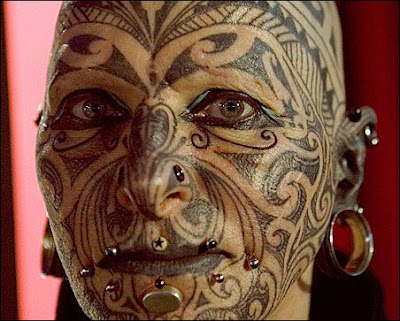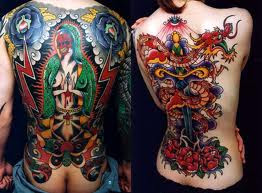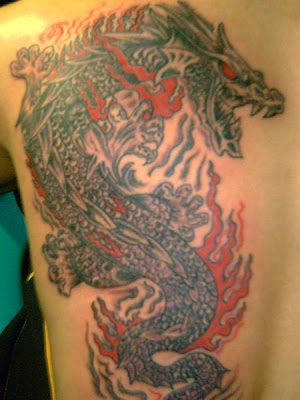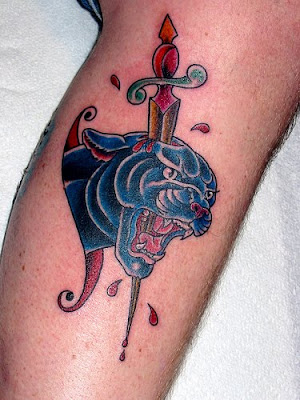Thursday, October 28, 2010
Harvard Sigma Chi Update: They've Apologized
AK note: Repost from the Harvard Crimson. Thoughts on the apology?
As The Crimson reported two weeks ago, a Sigma Chi party, which was billed as “Conquistabros and Navajos” received some criticism from some students on campus. Students were encouraged to dress up “as anything related to exploration in America, e.g. Columbus, pilgrims, conquistadors, Native Americans and cowboys/girls” for the party which took place over the Columbus Day weekend.
While initial negative reactions to the festivities were at first limited to students on campus, it has now sparked some outrage outside of the Harvard community.
Adrienne K., a Cherokee graduate student in the Boston area, posted an e-mail signed “The Members of Sigma Chi” on her blog Native Appropriations.
“The brothers of Sigma Chi invite you to our Columbus Day party this Friday: Conquistabros and Navajos. Start off the long weekend right with one of our best parties of the year. The theme is lighthearted and flexible,” the e-mail reads in part.
The claim that “the theme is lighthearted” seems to have struck a nerve with Adrienne K. “First of all, lighthearted?! You're calling the genocide of millions of Native peoples lighthearted? What if we re-wrote their invitation...to a new party called ‘Jew-bros and Nazi-hos’?” she wrote.
Another blog also criticized the party’s theme.
“All in all, it seems like a stupid idea, even if we don't know the details. If we did know the details, I'm sure it would seem much worse,” commented Newspaper Rock, a blog “where Native America meets pop culture.”
Sigma Chi has issued a formal apology, calling the theme “insensitive” and an “error of judgment.” The fraternity has pledged to donate the proceeds from their annual food drive to the Native American Heritage Association “to help rectify, in a small way, the ongoing pervasive deprivation and hunger on our nation's reservations.”
Here’s Sigma Chi’s full apology, addressed to members of the Harvard community:
“We would like to apologize for the theme of the party that we recently held. It was insensitive and hurtful, especially for the Native American members of our community. We are deeply sorry for the offense our actions have caused.
As a group that strives to be inclusive, and embraces members of numerous ethnic backgrounds and nationalities, including Native Americans, we recognize that this was a serious error of judgment on our part, and we expect better of ourselves. We have taken steps to increase oversight over future chapter activities to prevent offensive mistakes like this one. You have our promise that we will not allow it to happen again.
The chapter has decided to donate the proceeds from our annual food drive to the Native American Heritage Association to help rectify, in a small way, the ongoing pervasive deprivation and hunger on our nation's reservations. Again, we are deeply sorry for the lack of judgment.
Sincerely,
The Members of Sigma Chi at Harvard”
I'd like to think this was done out of the goodness of their hearts, but I did fire off some angry emails to the National Chapter of Sigma Chi, as well as the President of the Harvard Chapter, and a few other Harvard administrators...but I'm still glad they apologized.
Thursday, October 21, 2010
Harvard's "Conquistabros and Navajos" Frat Party
(Click for bigger version)
A couple of weeks ago, in the midst of Indigenous Peoples Day planning, I heard that the brothers of Sigma Chi at Harvard had decided to throw a "Conquistabros and Navajos" party in honor of "Columbus" Day. There was very little mention of it throughout the Harvard community (besides a quick quote in the Crimson from one of the Native undergrads, which I'll link below). Needless to say, I was outraged, and upset that there was little response from the university administration. This is so much more than a "cowboys and Indians" party.
So, when I was forwarded the invite this week, I figured it was not too late to call them out.
If you can see in the invitation above (which was forwarded widely throughout the undergrad community), it depicts a tall ship, bearing Sigma Chi sails, with the words:
Then, accompanying the flyer was an email from the fraternity, which stated:"In 1492 Columbus sailed the ocean blue, and in 2010, Harvard Sigma Chi is rolling back the clock again...On October 8th, at 11pm, come ready to set sail at a new kind of party. Come dressed to explore the New World...or defend it."
Hey everyone,
The brothers of Sigma Chi invite you to our Columbus Day party this Friday: Conquistabros and Navajos. Start off the long weekend right with one of our best parties of the year. The theme is lighthearted and flexible; dress as anything related to exploration in America, e.g. Columbus, pilgrims, conquistadors, Native Americans and cowboys/girls. This party will be list only, so reply to socialchair@harvardsigmachi.com if you want to request getting a couple friends/blockmates added to the list. We hope to see you there.
-The Members of Sigma ChiI bolded my favorite line of the email--"The theme is lighthearted and flexible; dress as anything related to exploration in America, e.g. Columbus, pilgrims, conquistadors, Native Americans and cowboys/girls".
First of all, lighthearted?! You're calling the genocide of millions of Native peoples lighthearted? What if we re-wrote their invitation...to a new party called "Jew-bros and Nazi-hos"?
Hey everyone,
The brothers of Sigma Chi invite you to our party this Friday: Jew-bros and Nazi-hos. Start off the long weekend right with one of our best parties of the year. The theme is lighthearted and flexible; dress as anything related to WWII/The Holocaust, e.g. Hitler, Nazis, The Gestapo, Jews and soldiers. This party will be list only, so reply to socialchair@harvardsigmachi.com if you want to request getting a couple friends/blockmates added to the list. We hope to see you there.***-The Members of Sigma Chi
I don't think that would fly at all, do you?
Beyond the horrifying minimization of the genocide of Native peoples and continuing legacy of colonialism in the Americas, let's talk about the logic here. So. First of all, Conquistadors and Navajos. I get the cutesy "omg we're so clever look at us make the theme of "bros and hos" into something related to Columbus Day!"--which has major issues as it is (remember our discussion of the sexualization of Native women?) but really? Conquistadors=South America, Navajos=American Southwest. Columbus=West Indies. Pilgrims=American Northeast. and how are cowboys even related at all?
And I refuse to accept the "it's just a party, get over it" mentality. Some of the main reasons this is incredibly harmful to Native peoples (including and especially the Native students at Harvard)...apologies to regular readers, who must get sick of my constant repetition of these ideas:
1. Glorifying and making light of the atrocities committed by the "explorers" of the Americas is just as bad as glorifying the Nazis and the Holocaust, and not something to be taken lightly.I could go on, but I think that might be enough for now.
2. The theme is using a generic stereotype of an Indigenous person (in this case "Navajo") to represent thousands of tribes and communities throughout the Americas, each with their own unique culture and history. The Indigenous groups who encountered the conquistadors are not remotely the same as Navajos in the southwest, and by lumping them together, the party contributes to continued stereotyping of Native peoples as one monolithic group--consisting of hollywood stereotypes of war paint, feathers, and buckskin.
3. Encouraging party goers to "dress up" as American Indians and Indigenous Peoples puts Native people in the category of a fantasy character--something that no longer exists, or never did. Columbus, Conquistadors, and Pilgrims are all situated in the past, but Native peoples are still here, are still alive, and still Native (and yes, cowboys are still alive, but they are not systematically oppressed and facing continued colonialism). It is also condoning dressing up in racial drag, and I would bet Sigma Chi might get in a little trouble if they hosted a blackface party.
The Crimson (the student newspaper) did write an article about the Indigenous Peoples Day vigil the undergrads hosted, and mentioned the party:
This candlelight vigil comes after a themed party held by Sigma Chi on Friday night drew criticism from many members of Native Americans at Harvard College. A member of the Sigma Chi leadership told The Crimson that the event was called “Brave New World,” but the theme has been characterized by other students as “Conquistabros and Navajos.”
“It’s always very disappointing to see native cultures lumped into one group that you can dress up,” said Tia M. Ray ’12, vice president of Native Americans at Harvard College and a member of the Navajo tribe, explaining how she felt that the event made a “mockery” out of her tribe.
A member of Sigma Chi said that the event was not intended to offend anyone, and the controversy has prompted discussion within the organization on planning future events."Brave New World" my butt. The invitation is above, you all can see exactly how they advertised the theme. and of course the "event was not intended to offend anyone"--does anyone set out to hold and event that is inherently offensive? It's just a cheap way of covering themselves.
There you have it, the glories of the bastion of cultural sensitivity that is Harvard College. Thanks, Sigma Chi. Looking forward to your future events.
...and oops, I might have left the email address of the social chair on there, if you'd like to let him know your thoughts.
UPDATE: Sigma Chi issued an apology.
***I made this up. This is a fake invitation. Just clarifying. But the first one is completely real.
Tuesday, October 19, 2010
Andrew Cuomo "Paraphrases" a "Native American Proverb"
Last night was the New York Gubernatorial Debate, featuring a fantastic cast of characters who are vying for the coveted role of NY Governor. I don't live in NY, and have more of a vested interest in what happens in CA this election cycle (I grew up in SoCal)...but I did get a tip that I should check out Andrew Cuomo's response to a question on the environment last night. So I did. And here's what he said (33:29 in this video, which unfortunately I can't embed):
Yeah, about that. I can only imagine his "team" getting him prepped for the debate and making sure he was ready for the dreaded "environmental" question with a "Native American Proverb"--showing he's both multicultural AND environmentally friendly!
"The Native Americans have a proverb, which if I can paraphrase, is 'we don't inherit the earth from our parents, we're loaned the earth by our children.' so, to be good public stewards of the environment, I think, is paramount for the government..."
Can you imagine if he started out his answer with "The African Americans have a proverb, which if I can paraphrase..." or "The Asian Americans have a proverb..." or "The Latinos have a proverb..." or even better, "The White Americans have a proverb..."--there would be outrage. Everyone would give him the side-eye and an eyebrow raise and be thinking "wtf? really?". But apparently it's a-ok with Natives, since all 565+ tribes and communities are exactly the same, just like all African Americans, Latinos, and Asian Americans are the same. Right?
But then, on top of the lumping of all the distinct tribes and communities into one generic "Native American," we of course have the fabulous stereotyping of all Natives as being the perfect environmentalists. Crying a single tear for Mother Earth (I could actually write an entire post on that commercial alone). There is just as much harm in romanticizing Native peoples (the Noble Savage) as there is in vilifying. Either end of the spectrum creates absolutes, and erases the nuance and reality of an extremely heterogeneous, diverse, and huge group of people. We are not all warring savages, we are not all peaceful envrionmentalists, we are people. Real, living people, who believe in different things and act like individuals. How ridiculous is it that I even have to type that out?
The best part is, that "proverb" might not even be Native at all. In my early morning googling, I came across varying phrasings of the same idea attributed to a "Kenyan Proverb", a "Pennsylvania Dutch" proverb, to the leader of the Free Tibet movement, to Chief Seattle (which it's not), or like five other "sources". It's a folk saying--who knows its origins, but of course, since it's about the environment, it must be by Indians.
So, yeah. See how much privilege, colonial legacy, imperialist nostalgia, and racism can be loaded into a 5 second sound byte? So much. Welcome to my lens through which I view the world.
Full debate can be viewed here (clip is at 33:29): http://www.ny1.com/content/127353/story
Crying Indian PSA: http://www.youtube.com/watch?v=m4ozVMxzNAA
(Thanks Liza!)
Thursday, October 14, 2010
Special of White Ink Tattoos
White Ink Tattoo is a kind of magic sticks especially those who are looking their interest that could be engraving from lot of events. The general tattooing one could be the process so that includes bordering all the events of the tattoo contains black as well as dark outline of the tattoo that could filled by the different color as well. This is not a scenario that the entire procedure would take place or carried out using these aspects of white ink throughout. Suppose we done freshly with this white ink tattoo so that the entire patch of skin that looks some thing like puffy and also sometime looks like swollen so that in that procedure the needle could be inserted as a deep in to it in the skin that could be so effective as well.
 Suppose once over this patch heals the entire seen and proof could be done so evidently so the entire events looks something lighter than the actual things of color it has before. For the skin toned people this kind of white ink Tattoo would be suits. Those who are having the pale skin for them also white Ink Tattoo would be matching also. One more important factor about this could be consider as a prior events so that having these kind of white Ink Tattoo and their willing to do such kind of events by tattoos. While the artist would like to do such kind of business as well and also realizes the potential user satisfaction conditions these are really helpful lot for many of the user. Suppose when we done newly and certain kind of nevertheless so that in that time these kind of white Ink Tattoo would helpful lot so that these are initial issue so that these are understand by the people. The entire change could be occurring when we want to change the scenarios. A white ink tattoo that could generally mistaken the certain amount of color like dark or black color of light of the particular tattoo.
Suppose once over this patch heals the entire seen and proof could be done so evidently so the entire events looks something lighter than the actual things of color it has before. For the skin toned people this kind of white ink Tattoo would be suits. Those who are having the pale skin for them also white Ink Tattoo would be matching also. One more important factor about this could be consider as a prior events so that having these kind of white Ink Tattoo and their willing to do such kind of events by tattoos. While the artist would like to do such kind of business as well and also realizes the potential user satisfaction conditions these are really helpful lot for many of the user. Suppose when we done newly and certain kind of nevertheless so that in that time these kind of white Ink Tattoo would helpful lot so that these are initial issue so that these are understand by the people. The entire change could be occurring when we want to change the scenarios. A white ink tattoo that could generally mistaken the certain amount of color like dark or black color of light of the particular tattoo.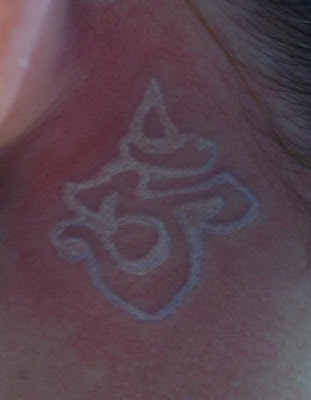
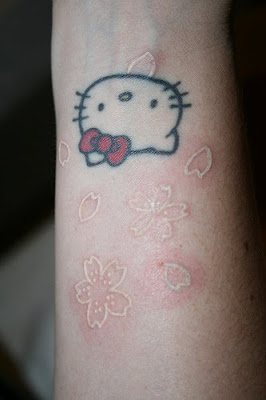 Special of White Ink Tattoos
Special of White Ink TattoosRandom Appropriation of the Day ("Friend Tire" Truck)
Going with the theme of Indians on the back of trucks/buses established in our discussion of Trans-Bridge's mascot yesterday, I thought I would share this image sent over by Bethany, spotted in Memphis, TN.
At least it's not "Savage Tire"? or "Enemy Tire"?
(Thanks Bethany!)
Wednesday, October 13, 2010
Trans-Bridge Bus Lines Mascot, "Hi-Yo"
This guy comes to us from reader Chris, who spotted a Trans-Bridge bus sporting the logo in Pennsylvania. The "about us" portion of their website gives this background on the logo:
In case you can't read it, the text says:
And that "Fugowees Jazz Club" seems like a winner too--in addition to using "Hi-Yo" as their mascot, the leader goes by the title of "Chief" and name "Big Red," and apparently they didn't let women in the club until 1997. Awesome. (All that info was in this article)
So Trans-Bridge Bus lines, I re-wrote your "Fun Fact" for you:
In case you can't read it, the text says:
"If you have ever driven behind a Trans-Bridge Lines' bus, then you must have seen painted on the rear window, a picture of HI-YO in all his splendor. HI-YO, an Indian Chief, has been adopted as the mascot of Trans-Bridge Lines. He is also the Mascot of the Fugowees Jazz Club founded in 1962, who gave Trans-Bridge permission to use Hi-Yo over 25 years ago. And so it is said, Trans-Bridge drivers are never lost, as long as they have Chief HI-YO to guide them."So, we've got the stereotypical "Indian Guide"--wearing a feather, loincloth, and mocassins, of course--who, like all Indians (right?) has natural and expert abilities of navigation and tracking. And his name is HI-YO. Sigh.
And that "Fugowees Jazz Club" seems like a winner too--in addition to using "Hi-Yo" as their mascot, the leader goes by the title of "Chief" and name "Big Red," and apparently they didn't let women in the club until 1997. Awesome. (All that info was in this article)
So Trans-Bridge Bus lines, I re-wrote your "Fun Fact" for you:
If you have ever driven behind a Trans-Bridge Lines' bus, then you must have seen painted on the rear window, a picture of a hurtful, stereotypical "Indian Chief" who we have named "Hi-Yo", because we think that all Indians have strange, nonsensical, syllabic names. HI-YO has been adopted as the mascot of Trans-Bridge Lines, because we all know that Indians make great mascots, since they aren't real people, don't exist anymore, and are just like animals. He is also the Mascot of the Fugowees Jazz Club founded in 1962, who are a misogynist and racist club, but don't worry, they gave us permission to use the image (though we didn't think to talk to any actual Indians, lol!). And so it is said, Trans-Bridge drivers are never lost, as long as they can look through their rear-view mirror and see this awesome image that forces all drivers on the road to forget that Indians actually exist, and think of them only as cartoons and mascots!Oh, and don't give me the "honoring" argument. That cartoon character is in no way an honor, I don't want to be associated with a half-naked cartoon on the back of a bus, thanks. Just because it's a "positive" image doesn't mean it's any less hurtful or harmful.
(Thanks Chris!)
Monday, October 11, 2010
Take Back Columbus Day
(Yale Native students commemorating Indigenous Peoples Day. Photo source here)
AK Note: Repost from Yale Daily News, beautifully written editorial by Native student Michael Eagleman Honhongva. Article can be found here.
By Michael Eagleman Honhongva
Indigenous Peoples’ Day commemorates the resilience of indigenous peoples worldwide, throughout campaigns of exploitation, prejudice, and outright genocide. But this year, you might know it as something different: the 518th anniversary of Christopher Columbus’ landing in San Salvador. Columbus Day glorifies a history of injustice and historical fallacy; Indigenous Peoples’ Day is a chance to reevaluate. Even Yale, a bastion of progressivism, only employs two American Indian professors among nearly 3,000 faculty members.
But rather than observe an anti-Columbus Day, we choose to remember our indigenous ancestors and their strength in the face of oppression, racism and hostility. The survival, adaptation, expansion and continuation of indigenous peoples are surprising given the catastrophic mortality rates, assimilationist policies and historical white-washing they have suffered. Still, indigenous peoples are thriving all over the world.
From the Ainu of Japan to the Maori of New Zealand, indigenous peoples constitute a considerable share of the world’s population. Their common characteristic is that they are marginal to the states that claim jurisdiction over them. However, the experiences of these people have also fostered resistance and eventual revitalization.
The need for a solution to the problems plaguing indigenous people in such areas as human rights, education and health has resulted in considerable progress — perhaps most important, the United Nations Declaration on the Rights of Indigenous Peoples. Unfortunately, the United States was one of four countries who voted against the declaration. Despite this setback, we still work to reveal historical truths and reverse the tide of ignorance.
No, Columbus’ voyage did not discover a new world and initiate American history. Rather, Columbus put two worlds into permanent contact, both with rich histories and cultures. The America of 1492 was not a wilderness inhabited by primitive peoples without complex civilizations and sophisticated systems of religious and scientific belief. And yes, people died after “discovery” — millions of them, from deadly pathogens, displacement policies and ruthless termination.
We cannot afford to trivialize or romanticize such a past. Certain events in history change forever our conception of who we are and how we see the world. Colonialism was one of them. The common historical practice of representing aboriginals as static relics, saved by the individualism and ambition of colonizers, is facile.
Today, Indigenous Peoples Day, is a day both to celebrate the resilience of indigenous peoples worldwide and to confront these distortions about the legacy of Christopher Columbus. It is a day to think about the land you stand upon and to consider those who inhabited it before you or your ancestors arrived. I hope students will reconsider celebrating one man, and instead, lend a thought to an oppressed, but hopeful people.
Though the stories of indigenous peoples are distinct, today our voices are united. As a collective of peoples, we celebrate our culture, our language, our songs and our lives. We recognize that our common histories and current realities may, ultimately, bind our fates together. Today we show that we are alive and we are strong.
Yale Daily News: Honhongva: Take Back Columbus Day
But rather than observe an anti-Columbus Day, we choose to remember our indigenous ancestors and their strength in the face of oppression, racism and hostility. The survival, adaptation, expansion and continuation of indigenous peoples are surprising given the catastrophic mortality rates, assimilationist policies and historical white-washing they have suffered. Still, indigenous peoples are thriving all over the world.
From the Ainu of Japan to the Maori of New Zealand, indigenous peoples constitute a considerable share of the world’s population. Their common characteristic is that they are marginal to the states that claim jurisdiction over them. However, the experiences of these people have also fostered resistance and eventual revitalization.
The need for a solution to the problems plaguing indigenous people in such areas as human rights, education and health has resulted in considerable progress — perhaps most important, the United Nations Declaration on the Rights of Indigenous Peoples. Unfortunately, the United States was one of four countries who voted against the declaration. Despite this setback, we still work to reveal historical truths and reverse the tide of ignorance.
No, Columbus’ voyage did not discover a new world and initiate American history. Rather, Columbus put two worlds into permanent contact, both with rich histories and cultures. The America of 1492 was not a wilderness inhabited by primitive peoples without complex civilizations and sophisticated systems of religious and scientific belief. And yes, people died after “discovery” — millions of them, from deadly pathogens, displacement policies and ruthless termination.
We cannot afford to trivialize or romanticize such a past. Certain events in history change forever our conception of who we are and how we see the world. Colonialism was one of them. The common historical practice of representing aboriginals as static relics, saved by the individualism and ambition of colonizers, is facile.
Today, Indigenous Peoples Day, is a day both to celebrate the resilience of indigenous peoples worldwide and to confront these distortions about the legacy of Christopher Columbus. It is a day to think about the land you stand upon and to consider those who inhabited it before you or your ancestors arrived. I hope students will reconsider celebrating one man, and instead, lend a thought to an oppressed, but hopeful people.
Though the stories of indigenous peoples are distinct, today our voices are united. As a collective of peoples, we celebrate our culture, our language, our songs and our lives. We recognize that our common histories and current realities may, ultimately, bind our fates together. Today we show that we are alive and we are strong.
Yale Daily News: Honhongva: Take Back Columbus Day
More Anti-Columbus Videos
- Conquistadora the Explorer: a satirical (and hilarious) look at the legacy of conquest in the New World
- Columbus with the Big Butt: made by Yurok/Karuk Koleyna Kohler when she was 9 years old, an amusing look at Columbus, with a catchy song that will get stuck in your head. For real. "look at that Columbus with the big butt..."
- The Truth behind Columbus Day: an excerpt from the full length doc The Canary Effect, which interviews Native leaders and scholars about US policies towards Native peoples.
- Vintage Columbus Mel-O-Tune: cringe-worthy cartoon, maddening to think about how many children have seen this on TV.
(Thanks Monica, Scott, and everyone else who sent these over!)
Reconsider Columbus Day
This is a fabulous PSA that was originally put together in 2009, entitled "Reconsider Columbus Day." The project is associated with ReconsiderColumbusDay.org, which is another fabulous resource.
Video can be found on the site above, as well as here: http://www.youtube.com/watch?v=il5hwpdJMcg
Debunking the Myths of Columbus Day
(video can be found here)
This video, from Ian Clark Online, goes through all the myths and arguments in favor of Columbus, debunking each one in an entertaining and easy-to-understand video. Definitely a must watch.
Celebrating Indigenous Peoples, Not Columbus
All the banks near my house in Boston currently have signs on the door that say "Columbus Day is a National Holiday. This branch will be closed Monday October 12, 2010." One even has a nice little picture of a boat. It makes me so angry every time I walk by, imagining all the kids in schools all over the US reciting the 1492 rhyme, learning about the Nina, Pinta, and Santa Maria, and coloring in pictures like those on the banks. I hate that this narrative of "discovery" has been so ingrained into our collective American consciousness.
(my friend Jenny a couple years ago in front of the same bank)
I can wax eloquent about what this means for us as Native people, or what it says about our priorities as a Nation, but the bottom line is this: Columbus Day sucks. We're celebrating a man who managed to "discover" a place that had already been inhabited by millions of people for thousands of years, who never actually set foot on the North American continent, who encouraged the raping and enslaving of Native peoples, and laid the groundwork for the ensuing centuries of imperialism and colonialism.
So basically, he didn't "discover" anything. He didn't "prove" the world was round. He was pretty dumb, actually. So why does Columbus get a National holiday?
Italian Americans have adopted the day as a holiday celebrating their heritage, and I don't want to rain on anyone's parade, but Italians already have a whole MONTH of celebration. So why not use that time to celebrate some Italian-Americans or Italians who have done awesome things that have contributed to the betterment of society, rather than Columbus?
Today I've prepared a series of posts, linking to some great resources from around the internet--videos, articles, and political cartoons, that draw attention to the ridiculousness of this day and will hopefully stir some conversation and maybe even some debate about the meaning and power of this day.
So today, as you go about your lives, enjoying your day off, remember to stop and celebrate 518 years of resilience and resistance, instead of colonialism and genocide. Celebrate Indigenous Peoples, not Columbus.
Thursday, October 7, 2010
Oh no, Khloe Kardashian.
(source here)
Khloe Kardashian just posted this picture to her twitter, with the caption "I love playing dress up!"
If you can stomach it, read the comments. They're already playing the "omg get over it stop being so sensitive it's just a hat!" game.
This makes me sad. I like Khloe.
So if you still need to know why it's wrong to dress up in a warbonnet:
I think this also drives home the point I've mentioned before of how Natives are often viewed as "fantasy characters"--something that you can dress up as, play pretend. Wizard, Princess, Indian. The problem is Natives exist, we are real, and putting Native people in the fantasy character category erases our current presence as actual human beings.
Here's the link to the photo: http://twitpic.com/2vjzgc
and Khloe's Twitter is here: http://twitter.com/KhloeKardashian
(Thanks Lanova!)
Wednesday, October 6, 2010
A Reminder of Why This Blog Exists: One Reader's Experience
AK note: I wanted to share this email I received last week from a fellow Stanford alum, who let me know how this blog changed his thinking about Indian mascots and Indian issues. As might have been clear in my post about activist fatigue, it's sometimes hard to keep fighting this battle day in and day out, but hearing from Ted (his email is printed with permission) gave me such a renewed sense of purpose and an excitement that there is space for change. Sometimes we all need a reminder.
Dear Adrienne,I hope it is okay to write you directly at this email address, I don’t really have a question or a tip or anything, I just wanted to write and tell you what I’ve been thinking about for the past month or so and how you directly affected it.It all started last month when I took my 12 year old daughter to a Stanford football game. A quick background, I was a Stanford faculty brat growing up on campus in the late 60’s and early ‘70’s. I went to the games as early as I can remember and continued going even after I graduated from Paly and moved to San Francisco to go to USF. So my memories, as a kid, were always of the Stanford Indians. I remember when the mascot was retired, I think I was 14 or so and while I always liked the mascot and “Chief Lightfoot”, I really didn’t care much either way on the issue. My dad told me that some students objected to the mascot and we had to respect their feelings. I always remembered the mascot fondly as a part of my childhood and never really gave much thought about why the mascot was retired.So at the football game against Sacramento State last month I felt a wave of childhood nostalgia when I saw a tailgate party decked out top to bottom in the old mascot. My daughter wanted to know why the team wasn’t the “Indians” anymore, and not really knowing the history, I told her I wasn’t sure, but that I thought a small group of students in the politically active 70’s had it removed for not depicting the image of Native Americans appropriately. She asked about professional teams that still had mascots and I explained that businesses could make decisions about things that institutions, even private ones like Stanford, couldn’t. She didn’t think that was fair, and we tried to think of any other college examples, and came up with quite a few. We both kinda scratched our heads and shrugged our shoulders and went in to the stadium and enjoyed the game. I suppose I just chalked the whole issue up to some overly PC students raining on everyone’s parade.After coming back home (we live in LA – ugh), I wanted to see if I could still buy a t-shirt with the old mascot on it so I Googled it and found a whole bunch of places where they were available. I also saw a link to your blog and thought I should see, from the other side’s (I wasn’t really aware there were “sides” until that moment) point of view, what the objection to the issue really was. (wasn’t really aware it was a big “issue” either!).Before I go on, I should point out that I am the kind of person who doesn’t mind offending people as a general rule. I don’t really care what other people think about my personal views on things like religion or politics. I enjoy rubbing people the wrong way sometimes, especially if it can make them think for a second instead of just going along with the pack. I own t shirts like “Your Favorite Band Sucks”, “Are Your Cats Old Enough to Learn About Jesus?” even some with four letter words (but that’s about as far as I go, I mean I don’t ever really want to be offensive just for the sake of being offensive, offending-sure, offensive – no). Anyway, I was fully expecting to reject your argument with a shrug of my shoulders and a “screw ‘em if they can’t take a joke”.But I couldn’t.Partly because of your persuasive writing (I’m sure thanks in part to that awesome Stanford education!), partly because of the dialogue I read in the comments of many of your posts and perhaps just a little bit of a mutual distain for the current version of the hipster, I have really come to a very different point of view. Don’t get me wrong, I will never fall into the politically correct camp, but what I did come away from all of this is: haven’t we done enough to Native people, not only here, but everywhere, yet? I’m pretty sure we have. So childhood memory be damned, innocent as it may have been, I did buy a t shirt today… the t shirt from a link in your blog that says “Retire Indian Mascots”. And I’m gonna wear it when we go to the USC game next week (thank goodness it’s red and not gold!), and I’m looking forward to pissing off some alumni.I’m certainly not looking for a pat on the back, I just wanted you to know that your writing has really changed the way at least one person thinks about this. This experience has caused our whole family to have a discussion of not only Native issues, but genocide and slavery in general and I think it is something we are better as a family for doing.So I wanted to thank you Adrienne, for your insight, your bravery and your honesty.Sincerely,Ted
Earlier: Robin Lopez Wore a Stanford Indian Shirt, and 15,000 People Saw
(Thanks Ted!)
Tuesday, October 5, 2010
Project Runway's "Squash Blossom" blouse
I've been reading a few Project Runway recaps and watching some sporadic clips online (again with the no cable thing--you think I can get cable written off as a blogging expense?), and a couple of people sent me this image from last week's episode.
From what I can gather, the contestants were asked to create a textile design, and then make an outfit centered around their creation. Gretchen chose the design above, which she called a "squash blossom" design, as a nod to her upbringing in the southwest.
So, it's actually kinda pretty. I like it. But, it's not a squash blossom design. This is a squash blossom design (or at least what I've always seen referred to as a Navajo squash blossom necklace):
(awesome picture, right? it's from Life Mag's archives, here)
Gretchen's design is, to me anyway, a Zuni headdress/sunbonnet design:
I think this brings up a really interesting discussion. I think it is ok for designers to "draw inspiration" from Native cultures, but it can become very uncomfortable very quickly, and there is a fine line between what is acceptable and what could be considered otherizing, marginalizing, and cultural appropriation.
As it stands, Gretchen collapsed many distinct tribes throughout the southwest region into one "Southwest Native American Style", and mis-characterized the design as a "squash blossom". She didn't attach an actual tribe to the design, which a quick google would have solved real quickly.
But also, like I said, I didn't see the episode, so let me know if I'm giving her an unreasonably hard time.
So, if Gretchen had said "my design is a design taken from the Zuni Pueblo in New Mexico, it is a traditional headdress or sun bonnet design, and is often used on jewelry pieces by pueblo artisans..." or something of the sort, would it have been better? I'm not sure.
Where do we draw the line of inspiration and appropriation? Can "inspiration" be done in a way that is positive for the (almost always) marginalized communities that the designs or styles are taken from?
These are things I grapple with all the time as images come through my inbox...and I'm still not sure I have an easy answer.
Thoughts?
UPDATE: apparently Gretchen DID call it a "sunbonnet" design, and the "squash blossom" came from the bloggers who apparently don't pay attention to the actual episode they are recapping. From my friend A.:
"Although I don't pretend to speak for the propriety of Gretchen's use of the sun bonnet pattern, I watched the episode, and she did say she was inspired by her mom's sun bonnet jewelry (not squash blossom), with multiple references to having grown up "in the southwest." The whole episode is available for viewing on mylifetime.com (it was an awesome episode, although not because of Gretchen)."So thanks for filling me in!
(Thanks Maria!)

